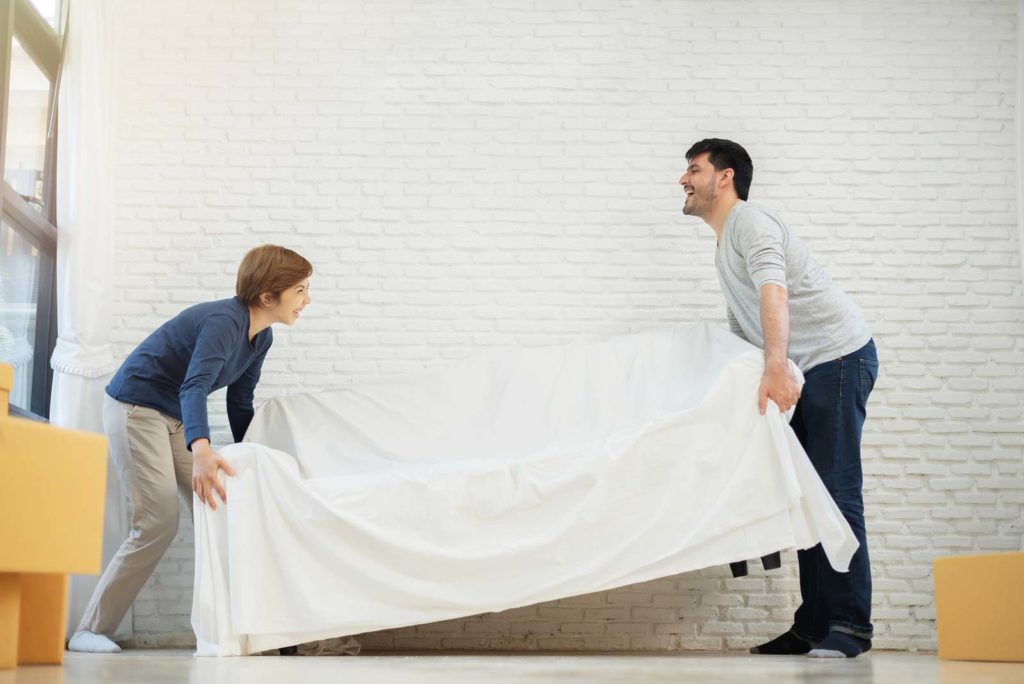Are you looking to store your furniture for a short or long period of time? Preparing it correctly will help ensure your items remain safe and in the same condition when you retrieve them.
In this article, we’ll provide a 7-step guide on how to pack furniture for moving and storage, so you can keep your belongings safe from damage and mould. Read on to learn more about the best practices for packing furniture for storage.
Choose the right storage solution for your furniture
Selecting the right storage solution is crucial when preparing furniture for storage. It should be affordable and offer flexibility and security to keep your possessions safe. Before signing a rental contract, ensure you know what to look for in a storage unit.
When choosing a storage unit, consider the following tips:
- Look for a unit that offers monthly rolling terms to give you more control over costs.
- Make sure the facility is secure, with CCTV monitoring and on-site staff.
- Research customer reviews to confirm that the company provides reliable customer service.

Clean everything before storing
Cleaning your furniture before storage is an important step when preparing it for a prolonged period of time. Dust and other particles can accumulate and cause damage to the finish and fabric, while moisture trapped under furniture covers can lead to mould growth.
To ensure that your furniture stays in top condition, follow these easy steps:
- Wipe down any dust or dirt particles with a dry cloth.
- Clean wooden furniture with a wood cleaning product and apply polish afterwards. Consider using an eco-cleaning product.
- Vacuum upholstered and leather-covered pieces and use the specific cleaning products recommended by the manufacturer.
Taking the time to clean your furniture before storing it away will help you maintain its appearance for years to come.
Take furniture apart before storing it
Taking furniture apart before storing it is essential to ensure its safety and longevity. Disassembling the pieces of your furniture allows for easy packing, transport and storage. It also prevents any unexpected damage or misplacement of parts during the process.
Here are three tips to help you properly dissemble your furniture:
- Carefully follow the instructions manual to take apart your furniture correctly.
- Store all nuts, bolts, screws and any other small parts in a safe place.
- Use proper tools when taking apart complex pieces of furniture for maximum safety.
Wrap furniture in protective materials
Wrapping furniture in protective materials is essential for preventing moisture and damage during storage. The wrapping will help keep the furniture in good condition.
Here are some tips on how to wrap your furniture properly:
- For wooden furniture, use blankets and packing wrap.
- For upholstered items, use breathable packing material.
- For metal surfaces, use plastic wrap and softer material underneath, such as bubble wrap or moving blankets.
To further protect your items during transportation, consider using the following materials:
- Straps, ropes or moving straps around larger pieces such as sofas or mattresses
- Packing tape
- Cardboard boxes
- Boards
- Plastic wrap or bags
- Wooden crates
- Padding material (like foam)
- Specialised packing supplies like shrink wrap.
Lastly, don’t forget about renting a moving van if you’re handling your removals yourself. Or you can hire a company to help you move your items into storage.

Protect glass items properly
Taking extra precautions when packing up fragile glass items before storage is vital. Wrapping them properly can prevent scratching and breaking on the way to storage or while the item is in storage.
Here are three tips for protecting glass items:
- Wrap mirrors and other glass items in packing paper and bubble wrap.
- Place the items in a styrofoam box for extra protection.
- Utilise eco-friendly alternatives as much as possible for an environmentally conscious approach.
Don’t pack furniture against walls or the floor
Avoid placing items against the walls or floor when packing furniture in a storage unit. This is because if the unit isn’t climate-controlled, condensation on the walls can lead to dampness and mould, damaging furniture and other items.
To prevent this from happening, take a few extra steps:
- Place wooden pallets on the floor before setting anything down.
- Don’t let pieces of furniture touch each other; give them some breathing room.
- Ensure the space is well-ventilated and items are placed at least an inch away from the wall.
Don’t overcrowd your storage space
When storing furniture, overcrowding your storage space can cause various issues. Not only can it lead to damage and breakages, but furniture may become difficult to access. It is important to take time to arrange items in a way that leaves an aisle at the back and sides.
Here are three tips for ensuring your furniture is stored correctly:
- Make sure you have enough space in your unit for all your furniture by measuring before hiring.
- Utilise vertical space by stacking items on top of one another where possible.
- Ensure fragile items are wrapped securely in protective materials before placing them in the unit.
Storing your furniture doesn’t have to be stressful
Preparing furniture for storage can seem daunting, but it doesn’t have to be if you plan ahead and follow the right steps. Doing so will ensure your pieces remain safe and secure in their new home until required again.
About the author:
StorageX is a storage company based in London. They make it easy, quick and affordable to put things into storage, whether you’re a household or a business. They pick up, store and return your belongings, so there’s no need to hire a van. Their storage units are highly secure with 24/7 CCTV and offer short- and long-term storage options.






